Spam and other unwanted emails are a nuisance, and it can seem like keeping them away from your inbox is a losing battle. But while you won’t be able to prevent every piece of spam from landing in your inbox, it is possible to significantly reduce the number of messages that show up.
In this guide, we’ll show you how to use filters, blocking, and spam reporting features to help stop spam from invading your inbox. We’ll also go over a few more tips on how to reduce unwanted messages overall.
How to stop spam in Gmail
If you use Gmail, the most popular email client, you will eventually start getting spam. Here are our two favorite ways to deal with it.
Block spam in Gmail
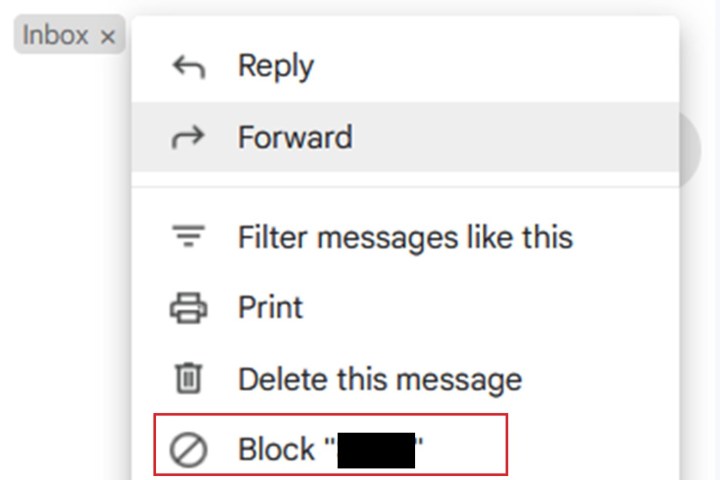
The easiest way to deal with a single spam email is to block it. To do so, open the unwanted email and then select: the More icon (three vertical dots) > Block [sender’s name].
This will deal with a single sender, but you may find similar emails pop up again and again. Try another approach below if that becomes a problem.
Report spam in Gmail
For more consistent issues, try Gmail’s Report Spam feature. Reporting spam in email clients like Gmail helps the service better identify spam emails in the future and it moves the offending email into your Spam folder and out of your inbox.
Here’s how to use the Report Spam feature in Gmail:
Step 1: Open up your desktop web browser and go to Gmail. Log into your account if you haven’t already.
Step 2: Once you’re logged in, select the emails you want to report as spam by ticking their respective checkboxes.
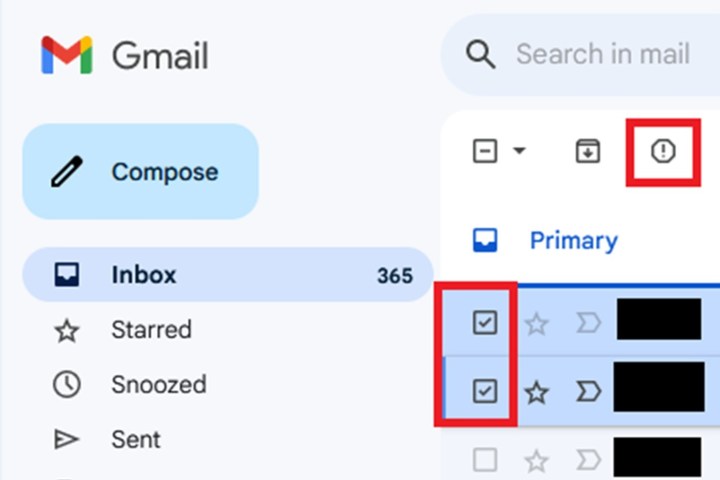
Step 3: Once you’ve ticked these boxes, a series of icons should appear at the top of your inbox. From these icons, select the Report spam icon. It looks like a stop sign with an exclamation mark in the middle of it.
That’s it. The message should automatically be moved to your Spam folder.
Filter Gmail spam
While Gmail has its own spam filters that it uses to keep your inbox free of spam messages, there’s no reason you can’t set up your own filters to filter out even more unwanted messages.
The great thing about Gmail is that you can filter out particular kinds of emails (messages with certain words or from a certain sender) and you can decide what the filter does with it (archive it or even delete it immediately).
Here’s how to use filters in Gmail to stop spam from making its way into your inbox:
Step 1: Open your desktop web browser and go to Gmail. Log into your account if you need to.
Step 2: Once logged in, navigate to the search box at the top of your screen and select the Show search options icon. (It looks like a filter icon.)
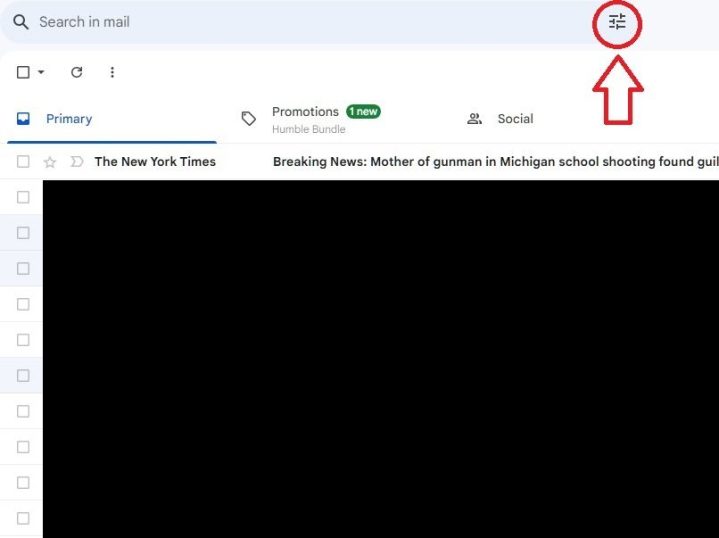
Step 3: In the form that appears, fill in the search criteria that your unwanted messages should meet before being filtered out. Once you’re done filling out the form, select Create filter.
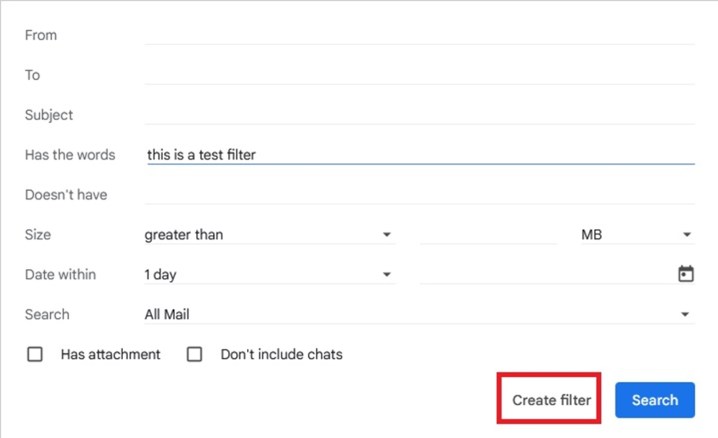
Step 4: On the next screen, select all the actions you want the filter to take once a message that fits your criteria has been detected. If you know you don’t ever want to see these unwanted emails again, select the Delete it option.
Step 5: Select Create filter to complete the process
Alternative method: Gmail also lets you use an unwanted email to set up a filter that filters out other emails like that unwanted email. To do so, open up the email you want to filter out and select the More icon, like we did for blocking emails earlier. From the menu that pops up, select Filter messages like these. You’ll then be directed to the same filter form we mentioned in the previous steps, but this time it’s prefilled out with at least one search criteria. Finally, finish creating your filter as you normally would.
How to stop spam in Outlook
Let’s face it, if you don’t use Gmail then you probably use Outlook. You can do a lot of the same things in Outlook to prevent spam that you can in Gmail. However, the steps look a little bit different. Here’s how to get started.
Block a spam sender in Outlook
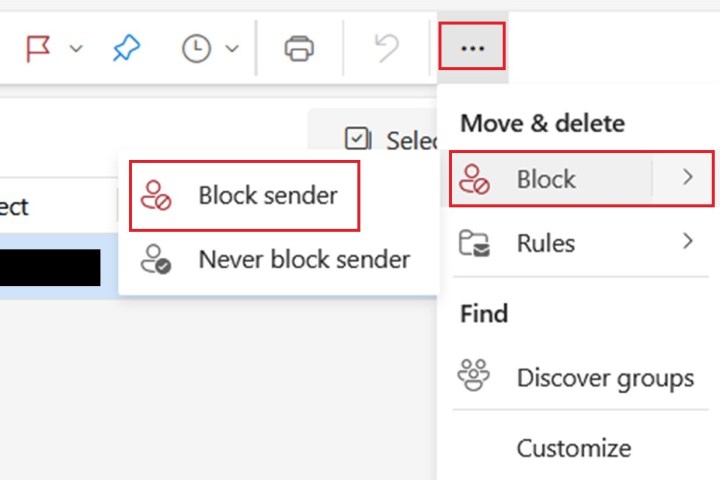
Blocking senders in Outlook on the web means that the email you selected will be deleted and you won’t receive any emails in the future from that sender.
To do so, go to your Outlook on the web inbox and select the checkbox next to the email from the sender you want to block. Then select the More options icon (the three dots symbol) from the toolbar above your inbox. Then select Block > Block sender > OK.
Report spam in Outlook
Outlook on the web also allows you to report emails as spam. Doing so will send the unwanted message to your Junk Email folder and immediately remove it from your main inbox. Here’s how to do that:
Step 1: Open up your desktop web browser and navigate to Outlook on the web. Log in to your account.
Step 2: Once logged in, select the checkbox next to the message you want to report as spam.
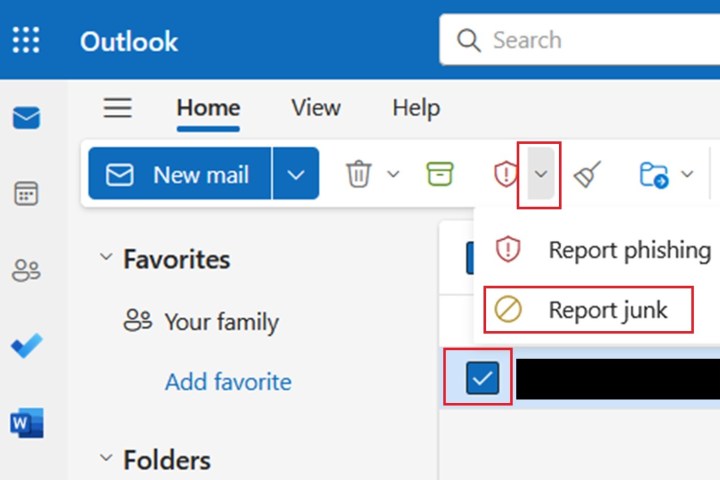
Step 3: On the toolbar above your inbox, there should be a red icon resembling a shield with an exclamation point in the middle of it. Select the Down arrow to the right of that icon. Then choose Report junk.
Filter junk mail in Outlook
You can also use filters in Outlook on the web to stop spam, but in Outlook, filters are known as “rules.”
In the following steps, we’ll show you how to set up a rule that can help filter out spam in Outlook on the web:
Step 1: Navigate to Outlook on the web via your desktop web browser. Log in to your account if needed.
Step 2: Once you’re logged in, select the More options icon and then choose Rules > Manage rules.
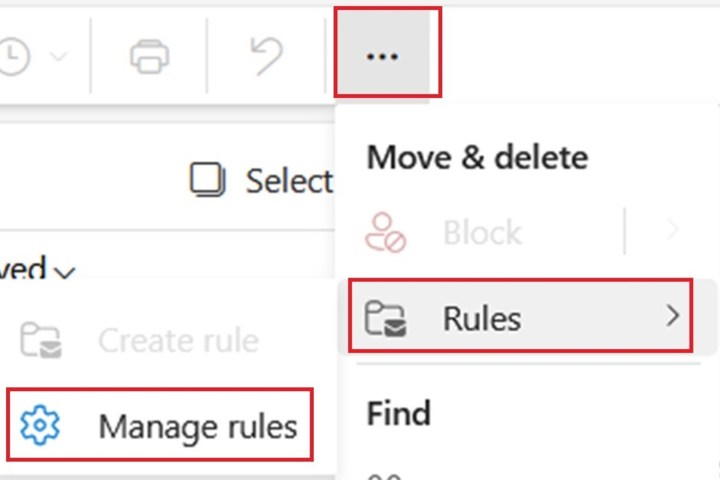
Step 3: Select Add new rule. Then fill out the form on the next screen. In this form, you’ll name the rule, add a condition (search criteria message must match), and choose an action for the rule to take once a message that meets the condition is detected (such as deleting the message).

Step 4: Once you’ve filled out the form, select Save.
Other ways to stop spam emails
If blocking and reporting spam still isn’t enough to tame your inbox, you still have other ways you can try to stop spam or other unwanted emails.
Unsubscribe from promotional emails
If unwanted promotional emails are constantly clogging up your inbox, the solution for reducing them is easy enough. Unsubscribe from them. Once you recieve one of those emails from a store you shopped at or service you used, open the email and scroll down to the bottom of the message. There should be a link to unsubscribe from that company’s mailing list.
And if you’re having trouble finding that link or don’t want to scroll, Gmail has its own handy link for unsubscribing from these kinds of emails. To use it: Open one of those emails, and select the blue Unsubscribe button at the top of the email and to the right of the sender’s email address.
Be sure to keep your email address private
You might have your reasons for posting some of your email addresses on websites or social media platforms. Work and business emails are commonly posted on company websites for certain kinds of jobs, or as part of promoting a small business.
But when it comes to your main, personal email address, it’s important to keep that one private and to be more careful about where you post it and who you share it with. Posting an email address to a website just attracts spammers, so try to avoid doing so if you can.
Editors' Recommendations
- The most common Microsoft Teams problems and how to fix them
- The most common GoTo Meeting problems and how to solve them
- How to clean a laptop screen without scratching it
- How to convert your VHS tapes to DVD, Blu-ray, or digital
- USB-A vs. USB-C: What’s the difference?


